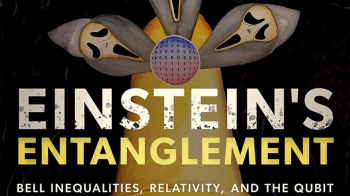
The space–time symmetries of physics demand that experiments yield identical results under continuous Lorentz transformations – rotations and boosts – and under the discrete CPT transformation (the combination of charge conjugation, parity inversion and time reversal). The Standard-Model Extension (SME) provides a framework for testing these symmetries by including all operators that break them in an effective field theory. The first CPT and Lorentz Symmetry meeting, in Bloomington, Indiana, in 1998, featured the first limits on SME coefficients. Last year’s event, the 8th in the triennial series, brought 100 researchers together from 12 to 16 May 2019 at the Indiana University Center for Spacetime Symmetries, to sample a smorgasbord of ongoing SME studies.
Most physics is described by operators of mass dimension three or four that are quadratic in the conventional fields – for example the Dirac lagrangian contains an operator ψ ∂̸ ψ (mass dimension 3/2 + 1 + 3/2 = 4) and an operator ψψ (mass dimension 3/2 + 3/2 = 3), with the latter controlled by an additional mass coefficient – however, the search for fundamental symmetry violations may need to employ operators of higher mass dimensions and higher order in the fields. One example is the Lorentz-breaking lagrangian-density term (kVV)μν(ψγμ ψ) (ψγν ψ), which is quartic in the fermion field ψ. The coefficient kVV carries units of GeV–2 and controls the operator, which has mass dimension six. Searches for Lorentz-symmetry breaking seek nonzero values for coefficients like kVV. In the 21 years since the first CPT meeting, theoretical studies have uncovered how to write down the myriad operators that describe hypothetical Lorentz violations in both flat and curved space–times. Meanwhile, experiments in particle physics, atomic physics, astrophysics and gravitational physics continue to place exquisitely tight bounds on the SME coefficients, motivated by the intriguing prospect of finding a crack in the Lorentz symmetry of nature.
The SME has revealed uncharted territory that requires theoretical and experimental expertise to navigate
Comparisons between matter and antimatter offer rich prospects for testing Lorentz symmetry, because individual SME coefficients can be isolated. The AEgIS, ALPHA, ASACUSA, ATRAP, BASE and gBAR collaborations at CERN, as well as ones at other institutions, are working to develop the challenging technology for such tests. Several presenters discussed Penning traps – devices that confine charged particles in a static electromagnetic field – for storing and mixing the ingredients for antihydrogen, the production of antihydrogen, spectroscopy for the hyperfine and 1S–2S transitions, and the prospects for interferometric measurements of antimatter acceleration. The commissioning of ELENA, CERN’s 30 m-circumference antiproton deceleration ring, promises larger quantities of relatively slow-moving antiprotons in support of this work.
Lorentz violation can occur independently in each sector of the particle world, and participants discussed existing and future limits on SME coefficients based on the muon g-2 experiment at Fermilab, neutrino oscillations at Daya Bay in China, kaon oscillations in Frascati, and on positronium decay using the Jagellonian PET detector, to name a few. Dozens of Lorentz-symmetry tests have probed the photon sector of the SME with table-top devices such as atomic clocks and resonant cavities, and with astrophysical polarisation measurements of sources such as active galactic nuclei, which leverage vast distances to limit cumulative effects such as the rotation of a polarisation angle. In the gravity sector, SME coefficient bounds were presented from the 2015 gravitational-wave detection by the LIGO collaboration, as well as from observations of pulsars, cosmic rays and other phenomena with signals that are proportional to the travel distance. Symmetry-breaking signals are also sought in matter-gravity interactions with test masses, and here CPT’19 included discussions of short-range spin-dependent gravity and neutron-interferometry physics.
The SME has revealed uncharted territory that requires theoretical and experimental expertise to navigate. CPT’19 showed that there is no shortage of physicists with the adventurous spirit to explore this frontier further.







